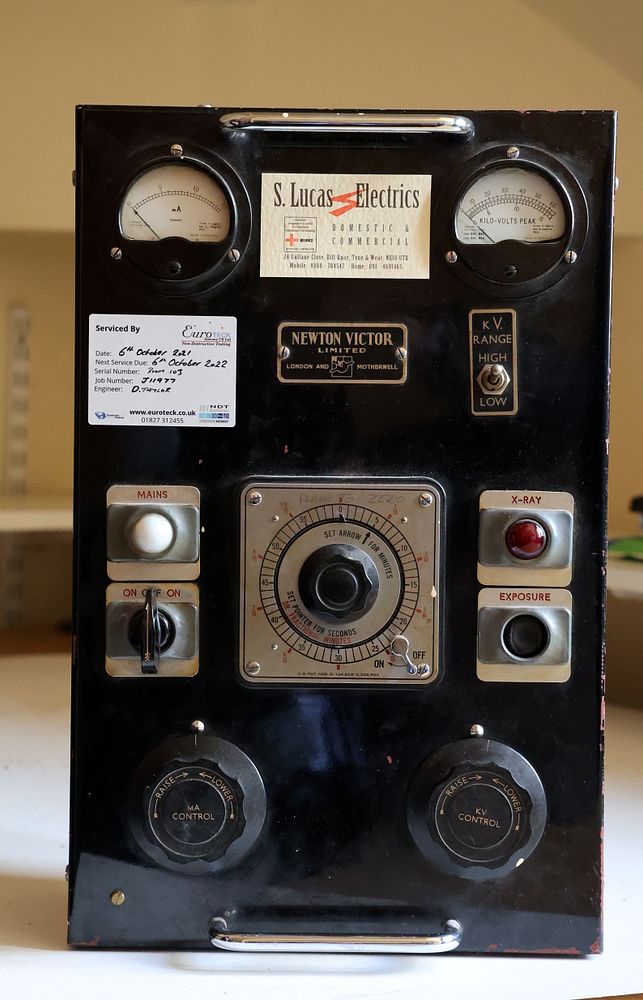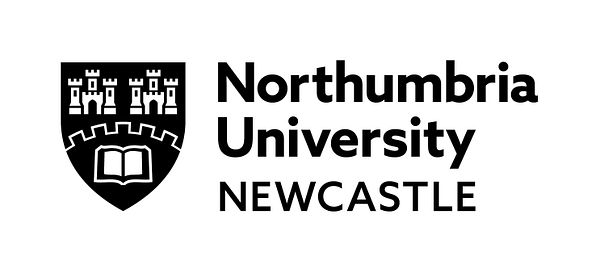
Press release -
Boost for art and music conservation with new X-ray machine
Northumbria University has unveiled a new state-of-the-art X-ray radiography instrument – an important investment which will boost education and cultural collaboration across the North East and beyond.
Housed within Northumbria’s historic Burt Hall, the X-ray unit will be used to enhance the University’s internationally renowned art conservation, design and music programmes.
The cutting-edge equipment replaces a vintage medical X-ray unit – originally acquired from Gateshead Hospital in 1978 – that served the university’s Conservation of Fine Art Master's programme for more than four decades.
With the new system, conservation specialists can now conduct higher-resolution imaging and examine a broader range of materials, including metals and wood, enabling the study of sculpture and musical instruments alongside easel paintings, textiles and works on paper.
Dr Richard Mulholland is Assistant Professor on Northumbria’s Conservation of Fine Art Master’s programme and said: “This new facility brings Northumbria in line with only a handful of UK institutions, including the British Museum and the National Gallery, with expertise and access to radiographic technology. It’s a game-changer for research in conservation and heritage science education and research.
“Our community of students and researchers work on real collection objects, strictly following museum-standard techniques. Our graduates enter the field as art conservators or as heritage scientists and work in major collections worldwide, so this resource will be invaluable.”
Burt Hall has been home to Northumbria’s Conservation of Fine Art Master’s programme since 1994. The course itself has deep roots in the region, originating in 1976 at the Shipley Art Gallery before becoming an academic offering in 1978 at Gateshead Technical College, which later became part of Northumbria University. Today, it is the only programme in the UK offering a Master’s in both the conservation of works of art on paper and easel paintings.
X-radiography has long been a specialism within the programme, and the new system has already revealed surprising insights. During initial tests using state-of-the-art digital plates from global non-destructive testing firm Waygate Technologies, working closely with Assistant Professor and easel paintings conservation specialist, Nicky Grimaldi, a 19th-century still-life painting purchased on eBay was found to conceal a hidden portrait of a female figure beneath its surface. The discovery, a key element of MA Conservation student Elliot Keim’s dissertation and upcoming PhD research, demonstrates the potential of the new system to support student research.

Speaking about the findings, Elliot said: “The x-radiograph highlights the reuse of the canvas. Through radiographic examination, we can uncover hidden changes beneath the surface, offering a rare glimpse into the artist’s creative process and revealing the painting’s fascinating history, layer by layer. The discovery prompts so many questions: Who is the subject of the portrait? Why was the initial portrait covered? Was the portrait painted by the same artist or a later hand? The revelations in this image place us closer to the hand of the artist, provoking questions that will inform my ongoing research.”
In addition to being used in teaching, the X-ray unit will also support new research into Northumbria’s art and music collections, including the Montagu Collection of Global Musical Instruments – part of Dr Rachael Durkin’s £1.5 million UKRI-funded Global Music Technologies project.
Comprising of more than 2,700 instruments, the collection was compiled by conductor, curator and author Jeremy Montagu over more than 50 years, and includes rare examples of instruments from diverse communities, spanning from the 12th century to present day.
Following his death in 2020, the collection was donated to Northumbria by Arts Council England’s Acceptance in Lieu scheme through Dr Durkin – a founding member of the University’s Music degree programme and a colleague of Mr Montagu’s.
Speaking about how the X-ray unit will be used in her research, Dr Durkin said: “This new equipment is an exciting development at Northumbria for object-based research. Accessing analytical equipment for heritage studies is always challenging, so to have the facilities on our doorstep proffers a step change in our research methods for both staff and students.”
The university’s art collection, which includes more than 3,000 works, and holds the archives of celebrated North East painter, Norman Cornish and internationally renowned Edwardian painter, Charles Sims, will likewise benefit from this enhanced imaging capability.
The introduction of the new X-ray unit also aligns with the relaunch of Northumbria’s Preventive Conservation MA, a unique distance-learning Master’s programme designed to train professionals in the care of collections in museums and heritage institutions worldwide.
Relaunching this September, the course addresses the storage, display, transit and handling of heritage collections, with a particular focus on global challenges such as climate change, decolonisation of collections and sustainable storage. It also benefits from bespoke, commissioned content from notable heritage institutions worldwide, from the Bodleian Library at Oxford to the National Museum of Barbados.
The investment in the new X-ray unit will also strengthen Northumbria’s ties with local cultural partners such as North East Museums, which manages twelve museums and galleries across North East England and the Archives for Tyne and Wear.
Dr Mulholland said: “This is a highly specialist piece of equipment which we hope will benefit cultural institutions across the North East through new and existing collaborations, and we look forward to sharing the skills and technology we have on offer here at Northumbria to reveal previously unknown information about heritage collections within our region and beyond, that will ultimately inform their preservation.”

Find out more about studying at Northumbria University.
Topics
Categories
UNIVERSITY OF THE YEAR 2022 (Times Higher Education Awards)
Northumbria is a research-intensive university that unlocks potential for all, changing lives regionally, nationally and internationally.
Two thirds of Northumbria's undergraduate students come from the North East region and go into employment in the region when they graduate, demonstrating Northumbria's significant contribution to social mobility and levelling up in the North East of England.
Find out more about us at www.northumbria.ac.uk
--- Please contact media.communications@northumbria.ac.uk with any media enquiries or interview requests ---








